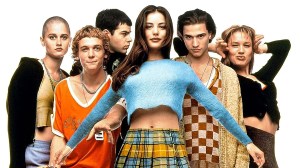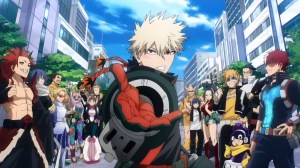There’s no debating that Garth Ennis is the writer who has most influenced The Punisher, Marvel’s most notorious anti-hero and consistent selling characters. Ever since he first tackled the character in 2000, the writer and character have been drawn back to one another for some of the most acclaimed superhero comics of the current century. He has even managed to surpass the character’s original creators, writer Gerry Conway and artist John Romita, Sr., in terms of association.
Videos by ComicBook.com
While Ennis may be the writer most associated with the character, The Punisher isn’t best known for one liners and clever plot twists. He is a character defined by an iconic design, brutal action sequences, and some of the toughest page turns in comics. Artists are every bit as important, if not more so, when it comes to defining who The Punisher is to comics readers today. So, who are the greatest Punisher artists of all time?
We have five answers for you.
Steve Dillon

You never get Ennis’ legacy on The Punisher without his inimitable collaborative partnership with Steve Dillon. This duo was always better together, bringing out the absolute best in already great creative work. Dillon’s Punisher managed to capture disparate elements of the character and his world in a consistently surprising fashion. His direct approach to storytelling, a dedication to clear delivery of action and story beats, ensured that even the most hectic of battles never left readers confused. In addition to that, the unique facial expressions that blended cartooning with grotesque caricature ensured that there was never any doubts about what lay behind Frank’s grimace or his victim’s screams.
Yet the most effective element of Dillon’s work is how he managed to infuse humor into The Punisher without undercutting any of the other elements. In the typically dour and violent underworld that Frank Castle spent his time in, Dillon could deliver each joke or humorous twist well enough to elicit actual laughter. For every great death or terrifying trap, there’s a gangster smiling and saying “It’s bears” seconds before a polar bear decapitates him.
Dillon was truly one of a kind, and so was his take on The Punisher.
Recommended Reading: The Punisher (2000 – 2001)
Mike Zeck

Zeck is the very first artist to draw The Punisher in his own series, the five-issue mini later titled “Circle of Blood”. While he did not draw as many issues as other artists on this list, his work on The Punisher would defined the look of the character’s stories, and much of Marvel’s grittiest fare, for a decade to come. This is the world of 1980s New York City filtered through the most paranoid of lenses. Criminals take on traits that resemble monsters more than men with gargantuan pectorals or thin, weasley faces. Zeck allows readers to drop into a nightmare version of the real world, one in which The Punisher’s existence isn’t simply justifiable, but desirable. It’s a mad, mad take on the Marvel Universe, one which later created “Kraven’s Last Hunt” and had a long-lasting impact on Frank Castle.
Recommended Reading: The Punisher (1986)
Goran Parlov

There’s no doubt that Dillon is the artist most associated with the multiple beloved Punisher series to come from Marvel’s MAX line, but Goran Parlov doesn’t get nearly enough credit. He’s the artist that defined one of Frank Castle’s only ongoing foes in Barracuda and brought the man back into the Vietnam War in the maxi-series Fury. His sharp lines create a world where even the landscape feels like it could cut you like a knife. Characters are well-defined by their silhouettes, and each wound looks as raw as the flatted red colors inside. Parlov is a modern master, and his take on The Punisher might be the most stylistically brutal version to date. That’s also what makes his return to the character with Punisher: The Platoon so exciting. Be sure to check it out.
Recommended Reading: Fury Max #7 – 9
Jim Lee

If Zeck defined The Punisher as he was born into the mid 1980s, it’s Jim Lee who would carry the character into the world of the 1990s. It’s easy to recall this period in comics for its artistic excesses, but Lee’s take on the character is somewhat modest compared to contemporary work on comics like X-Men. There’s lots of rippling muscles and big guns, but they are still placed in the exaggerated underbelly that could be connected to revenge films like Death Wish.
Lee’s work on The Punisher shows his development as an artist who maximizes his sense of cool and effect in any given panel, while continuing to labor over detailed linework. Reading his work on Punisher: War Journal ought to be rewarding to both fans of the character and the artist involved.
Recommended Reading: Punisher: War Journal (1998 – 1995)
Klaus Janson

Many comics fans think of Janson as the master inker who helped realize collaborations with Frank Miller like Daredevil and The Dark Knight Returns. Yet his work as a penciler often goes overlooked to the loss of those who ignore it. One of the finest examples of that work can be found in a three-issue crossover between Captain America and The Punisher. It’s excess and violence is nothing short of magnificent, embracing the craziest elements of the period in which it was published to great effect. Motorcycle chases, South American mansions, and a truly insane number of shootouts make this the sort of fun comic that delivers on every page. It’s Janson’s work that makes all of it work too as he guides readers through the madness with maximum impact in each panel.
Our recommended reading for Janson isn’t easy to come by, and has not been made available digitally, but it’s well worth the time required digging in dollar bins to read.
Recommended Reading: Punisher and Captain America: Blood and Glory
Honorable Mention: Declan Shalvey

While Shalvey has never illustrated the interiors of a Punisher comic, his work on the covers of the current ongoing series have been a highlight in comics over the past few years. Each cover incorporate elements of the story along with the iconic skull logo to craft a unique and inviting introduction to the tales inside. One key element of Shalvey’s design is the spartan nature of the settings, which only occasionally contain figures and creates lots of distance between any that may exist. These covers build a mood as much as anything else. They are haunting, lonely, and dangerous, embodying The Punisher perfectly in each carefully crafted image.
[Embed id=27877]The Punisher (Generic: the-punisher)[/Embed]








